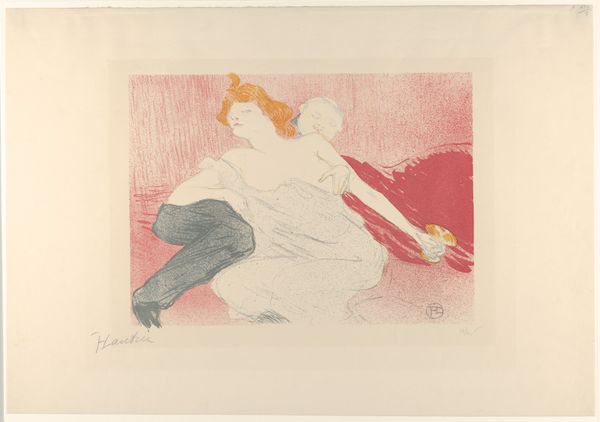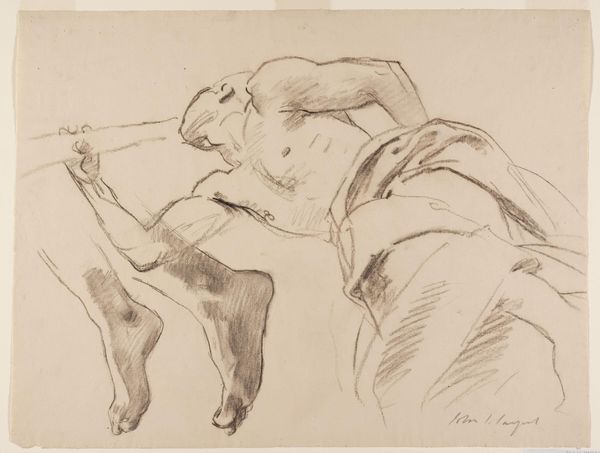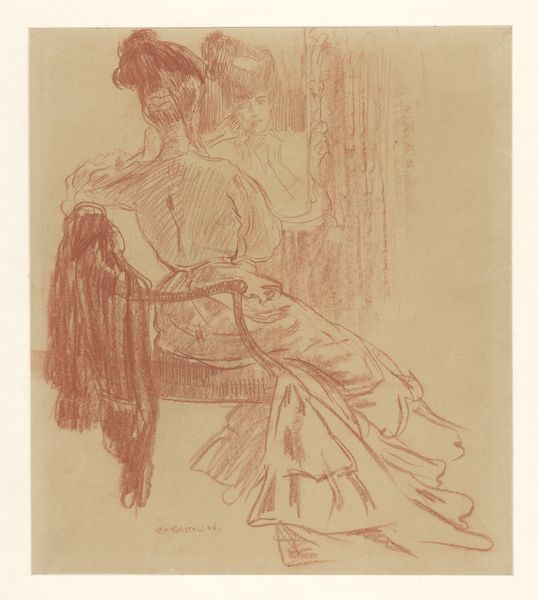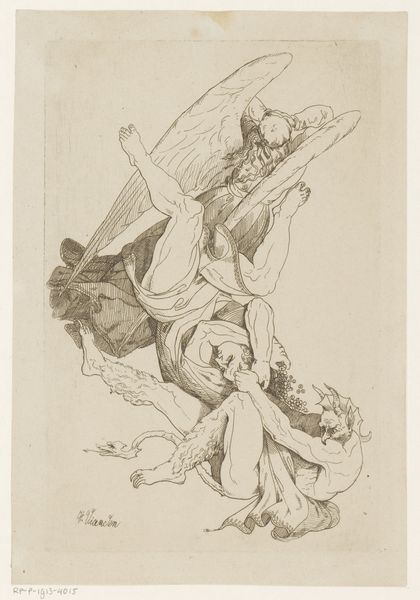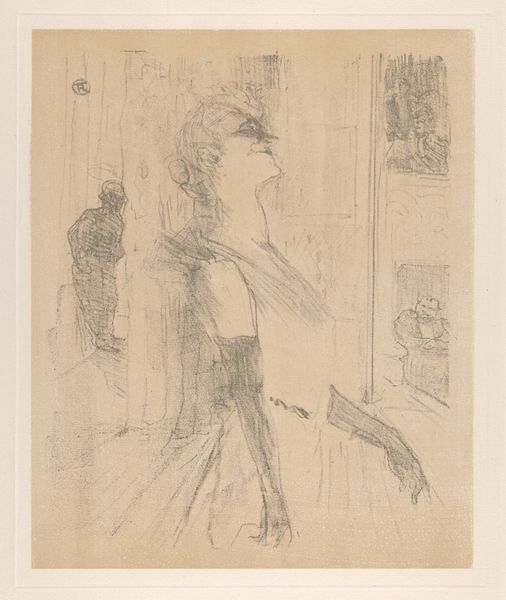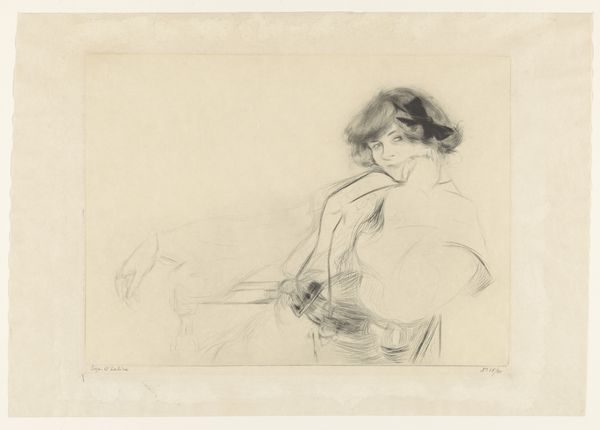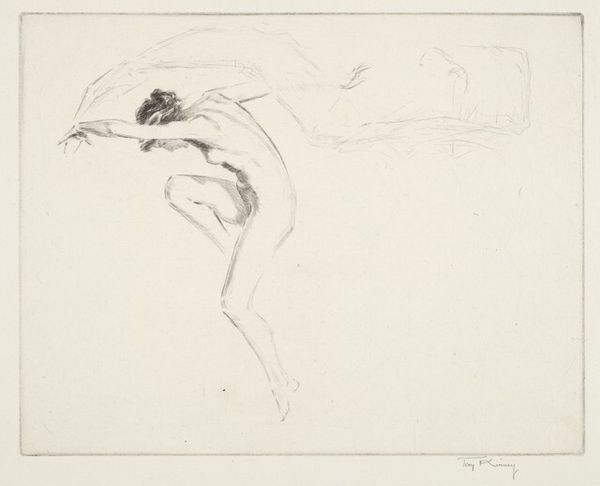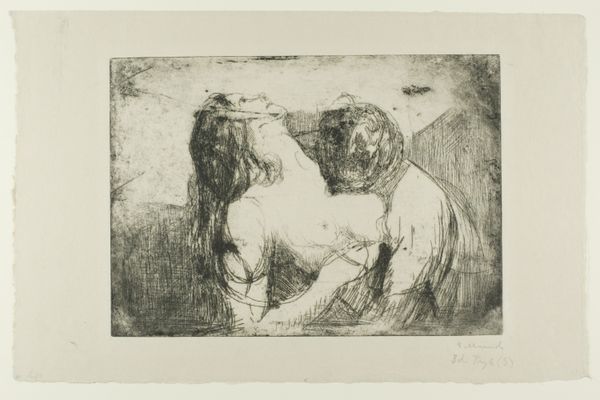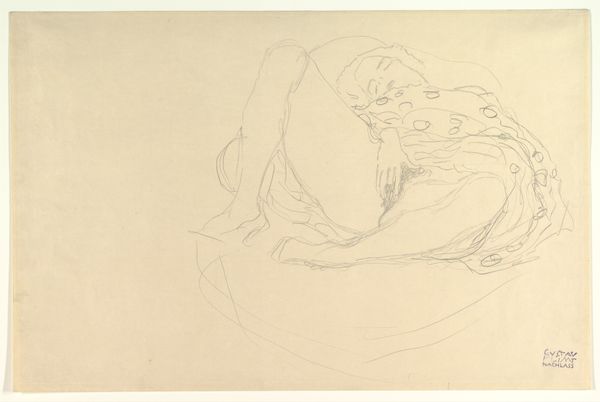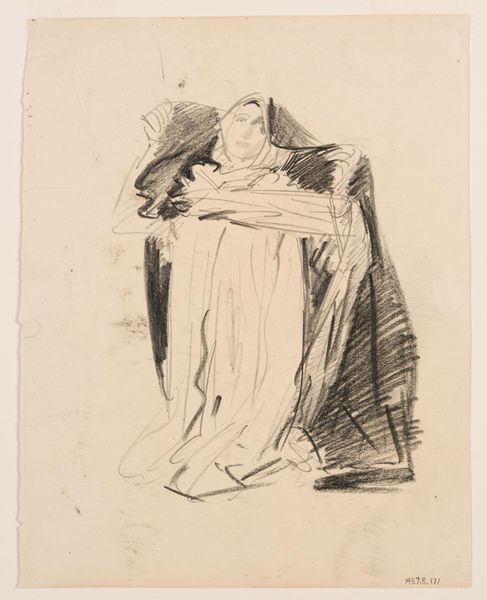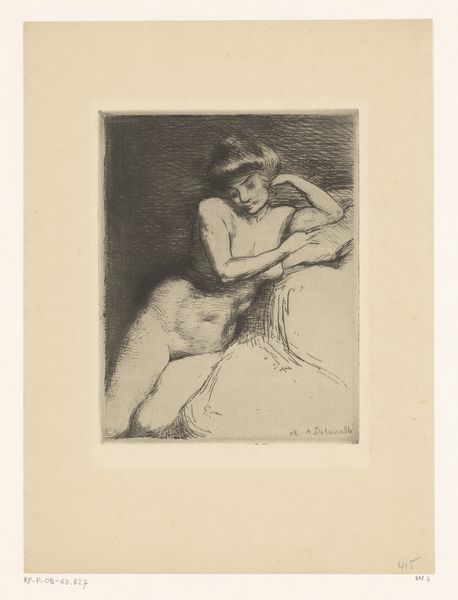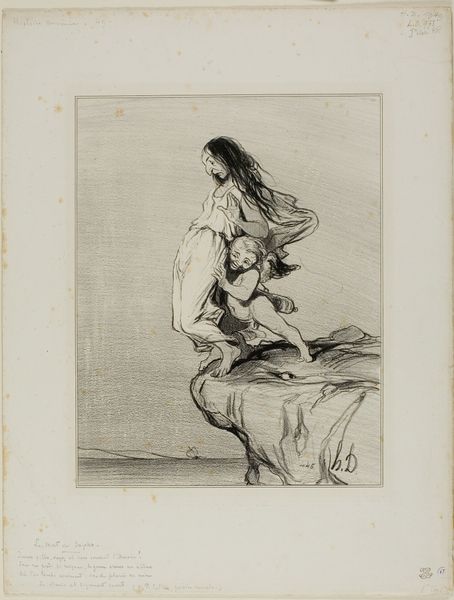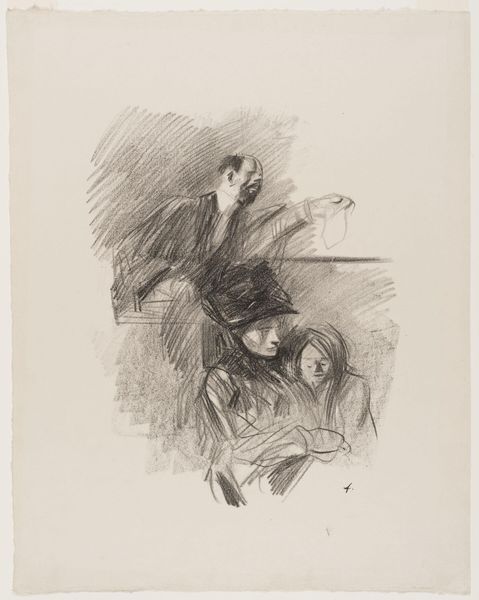
Dimensions: 384 mm (height) x 562 mm (width) (bladmaal)
Curator: This is "Débauche", a lithograph by Henri de Toulouse-Lautrec, created in 1896. It resides here at the SMK, the Statens Museum for Kunst. Editor: The hazy washes of rose and crimson feel heavy. There is almost no sense of weightlessness here, but something denser… Curator: Density, perhaps, speaks to the scene depicted—a brothel. Lautrec was fascinated by the lives of Parisian prostitutes and their complex social dynamics, capturing these women away from the male gaze. Here we observe a seemingly intimate moment between two women. Editor: I see how the choice of lithography supports the portrayal; the material grit seems fitting for its subject. The textures feel honest, unrefined – raw, almost, evoking the very means through which their lives, and perhaps their dignity, are consumed. Curator: Exactly. Lithography allowed Lautrec to produce prints quickly and cheaply, making his work accessible to a wider audience while still possessing an artistic quality. Note the androgynous features and suggestive elements. It prompts us to question conventional views on gender roles. This portrayal deviates from many representations of lesbian love at the time, ones intended purely for male consumption. Editor: So it seems a subversion by depiction rather than message. The materials themselves play a part in the broader politics then – they lower the cost, diversify viewership, perhaps enabling this depiction to reach more unconventional audiences. The composition reinforces this with an off-kilter design that adds a somewhat chaotic, unstaged appearance. Curator: Right. It disrupts expectations around erotic imagery and allows viewers to consider the interiority of the subjects and the conditions they lived and worked under. By bringing those often silenced to the fore, the artist challenges us to look deeper, to feel with more humanity, and, crucially, with intersectional considerations. Editor: Indeed. It's about materials, means and the moment that together create visibility in multiple ways. It's less about the intention than the opportunity that these means create. A reminder that visibility comes with complex physical creation, labour and material culture.
Comments
No comments
Be the first to comment and join the conversation on the ultimate creative platform.
